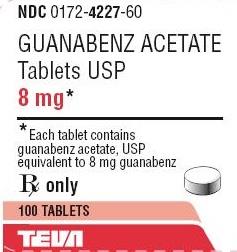EDIT: Cliff Notes version of my post.
Guanabenz cured SCA3 in worms. Guanabenz is an FDA approved medicine used to treat high blood pressure.
-
-
So a few days ago I learned of a new drug Hydromethylthionine that was in Phase 3 clinical trial for treatment of Alzheimer's Disease:
Concentration-Dependent Activity of Hydromethylthionine on Cognitive Decline and Brain Atrophy in Mild to Moderate Alzheimer’s Disease
ncbi.nlm.nih.gov/pmc/articl...
Hydromethylthionine is a redesigned version of a drug that has long been studied called Methylene Blue. You can buy it online to treat viruses in fish tanks and some people take it as a nasal wash in the belief it prevents viral infection. Anyways, the reason it was interesting to me is because the way Hydromethylthionine was helping people with Alzheimer's was something that would very likely also be helpful to people with ataxia. An interesting sidebar, the researchers initially were confused in their Phase 3 trial because the "placebo" seemed to have the same impact as the drug, but what was happening was quite curious. Hydromethylthionine causes a patient's urine to change color so in order for patients to be "blinded" by the placebo they were actually given a tiny dose of the real medicine with the belief that a small dose would not be effective, BUT the researchers learned that even the tiny dose was enough to help patients with Alzheimer's get better. So, what does this have to do with ataxia???
Well, obviously I was curious to see if anyone was exploring this drug for treatment of ataxia, and what I found was the more common version, methylene blue, had been studied for treatment of Friedrich Ataxia, but more importantly a recent study was done on Machado Joseph Disease also called MJD or SCA3. Now mind you as is the case with so much else that I find, the research so far has been done only in worms, and even more surprising the researchers didn't test just one drug but rather 3 drugs and what they found was that all 3 drugs helped improve the lifespan and reduce the symptoms of the poor 'ole worms with MJD/SCA3, but one drug in particular was better than the others, and that drug was called Guanabenz and is already approved for treatment of high blood pressure. Finally, and this is the part that got me really excited, the paper ended with this note:
"Additional studies are required to extend these findings to mammalian models of MJD. However, from a practical perspective, given that guanabenz has US Food and Drug Administration approval and is being tested in a clinical trial for multiple sclerosis, it could be translated rapidly into clinical settings for MJD."
So, obviously I went off to find the MS clinical trial, and guess what I found. The people trying to study this drug ran out of money, and the rights to the idea were bought by Teva Pharmaceuticals, the same company that now has the rights to several "cheap" drugs that show potential in the lab, but have yet to be tested in humans including my favorite, trehalose.
Go figure . . .
Anyways, Guanabenz is only available as a prescription, but I think I I might consider taking this study to my neurologist and see what she says . . .
Rescue of ATXN3 neuronal toxicity in Caenorhabditis elegans by chemical modification of endoplasmic reticulum stress
ncbi.nlm.nih.gov/pmc/articl...
Cheers,
Joe in NY
p.s. yes, the study was done on ATXN3 the mutant protein involved in SCA3, but the way the drug works is the same as numerous other drugs that help block mutant proteins so based on all the evidence I have read to date it is highly likely to be helpful for many, many forms of ataxia.

